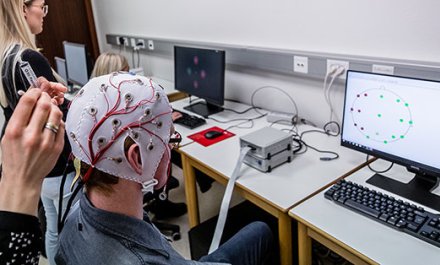- Study
- Student
- Research
- About UNAK
- University
- Schools & faculties
- Governance
- Rector
- Rector’s Office
- University Council
- University Assembly
- University Office
- Laws and regulations
- Organization
- Code of Ethics
- Councils and committees
- Strategies & policies
- On campus
- Human resource
Neurodiversity in Higher Education

Neurodiversity describes variation in brain function between individuals, including conditions such as Attention Deficit Hyperactivity Disorder (ADHD), Autism spectrum disorder (ASD), or Dyslexia. Neurodiversity is common in the general population, for example, about 10% of the Icelandic population have Dyslexia. Neurodivergent individuals face substantial barriers in society, e.g., due to difficulties in communication or reduced attention span. In higher education, struggles to succeed are well-documented. However, while neurodivergent conditions have traditionally been considered as disabilities, neurodivergent individuals often exhibit strengths in comparison to neurotypical individuals.
Following the Universal design for learning principles where pedagogy is changed for all students we aim at improving the learning outcome for neurodiverse and non-neurodiverse students alike in selected courses. We propose to start the project in Fall 2024. We will conduct three rounds of interventions, based on materials that are based on scientific evidence, are co-created with neurodivergent students, and that are continuously optimised. Universal design for learning principles include, e.g., more flexibility and choice, information presentation in multiple modalities (verbal, visual, text), encouraging students to express themselves in alternative ways (written or oral), and allowing assistive technologies and information and communication technologies, among others.
The project aims at:
- creating support and training material for teachers and supporting staff in higher education in Iceland on inclusion of neurodivergent students;
- evaluating these materials in different courses across the exemplary study lines of computer science and psychology of the involved universities;
- analysing the extent to which neurodiversity is common among the student populations via self-report questionnaires; and
- disseminating the results of subgoals 1-3 to well-defined target groups through various channels, i.e., on a scientific level, university stakeholders, affected individuals, and the general public.
Members
- Yvonne Höller – University of Akureyri
- Grischa Liebel – University of Reykjavík
- Caine Myers - University of Akureyri
- Pétur Kristófersson- University of Akureyri
- Student counselling services University of Akureyri
- Student counselling services Bifröst University
- Student counselling services University of Reykjavík
- Valeria Occelli - Edge Hill University, Ormskirk Lancashire, UK
- Daiana Oliveira - UNIVESP, São Paulo, Brasil
- Andrew Hill - University of Akureyri
- Guðmundur Heimisson – University of Akureyri
- Verena Dresen - University of Innsbruck, Austria